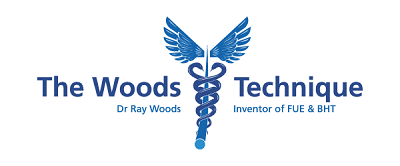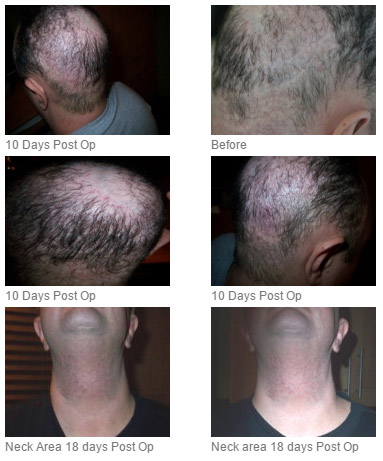Huey 1,500 FUE
Hair Plug & Strip Surgery Repair Before and After 1500 FUE Grafts By Dr Woods
Previous to Dr. Woods’ pioneering the Woods Technique of Follicular Unit Extraction (FUE) patients had a very limited menu of options when it came to hair relocation surgery. The method that entered the general public’s consciousness involved the use of hair plugs. The reason this method became so widely known is due to the fact that the difference between hair plugs before and after the surgery was unfortunately distinctly noticeable. Based on the older surgical technique of skin grafts, the hair plug method would take small circular excisions of scalp from the donor area and graft them onto the areas of the scalp suffering from hair loss. Each circle or “plug” would carry with it hair follicles that were “evergreen” or still growing hair.
Hair plugs before and after the surgeries may have looked fine at first since the newly transferred plugs were covered up by hair that still grew in the recipient area. But as time went on and the patient continued to suffer further hair loss the plugs had no more cover or camouflage and became increasingly noticeable. Patients were then left with only the transferred plugs growing in the recipient areas. Since the remaining growing follicles were grouped together on the plugs patients would end up with an unmistakable “doll’s hair” or “palm tree” effect on their scalp. Hair plugs exposed in such a manner cannot be styled to hide them leaving patients with the options of either covering up (hair piece or hat) or shaving it off completely.
With Dr. Woods’ FUE technique patients suffering from a hair plugs’ doll’s hair look can now have the scalp restored to a more natural look by removing individual hairs from the plug areas and redistributing them to create a more natural-looking hairline.

